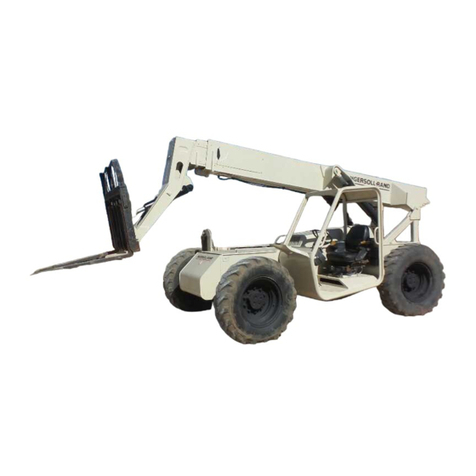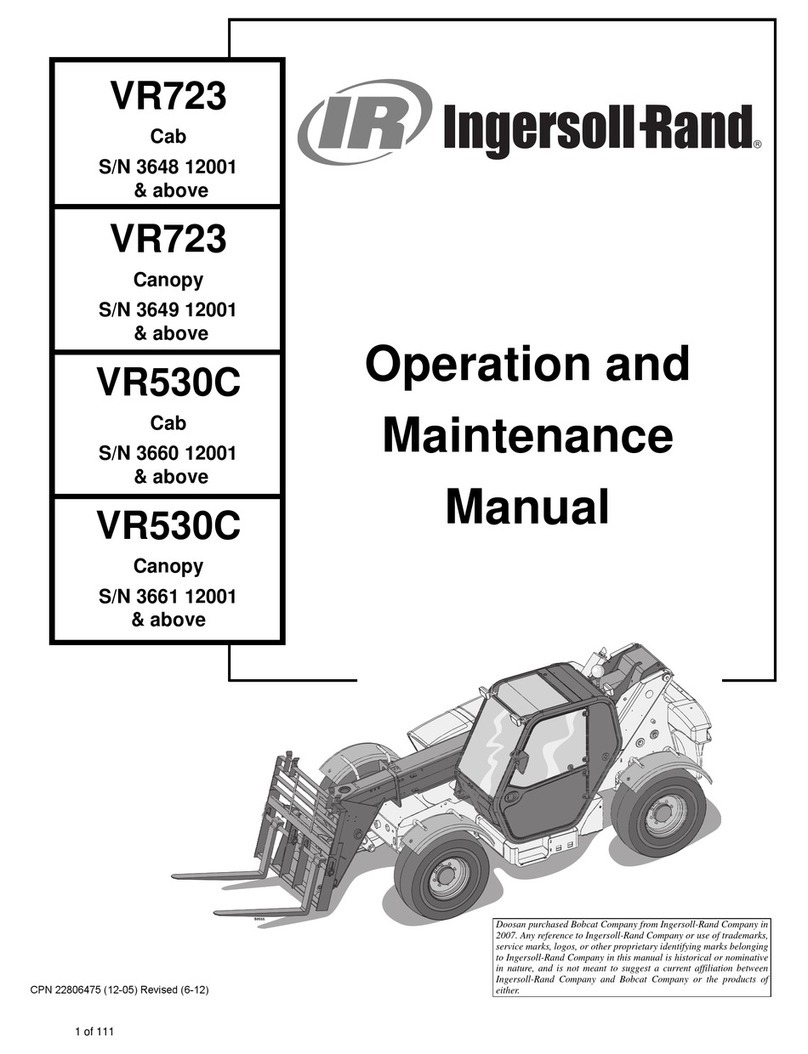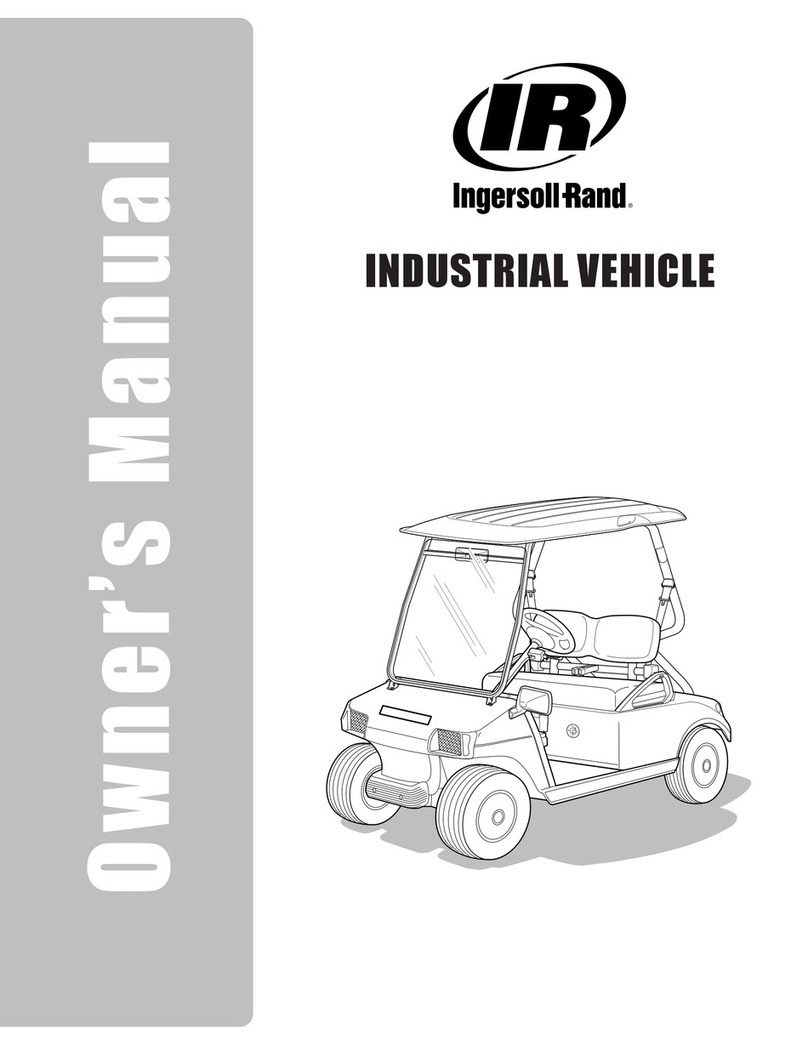
Safety instructions
WARNING
Operators must read and understand instructions
before running the machine. Untrained operators can
cause injury or death.
• SEAT BELT: Check belt fasteners and check for damaged strap
or buckle.
• OPERATOR CAB (ROPS & FOPS): It must be on the machine with
all fasteners tight. Never use the machine without the right side
window.
• OPERATOR'S HANDBOOK: Must be in cab.
• MACHINE SIGNS (Decals): Replace if Damaged
• SAFETY TREADS: Replace if Damaged
• GRAB HANDLES: Replace if Damaged
• PARKING BRAKE
• WINDOWS AND MIRRORS: Clean and check for broken window
or mirror. Replace if Damaged
Never use the telescopic handler without instructions. See the
machine signs (decals), Operation & Maintenance Manual, AEM
Safety Manual and data sheets located in the cab.
Safety Alert Symbol: This symbol with a warning statement means: “Warning, be alert! Your safety is involved!” Care-
fully read the message that follows.
Always fasten seat belt securely.
Do not have any part of your body out-
side the cab
Never use the telescopic handler with-
out operator cab (ROPS & FOPS). Never use the machine as a working
platform or an elevator unless it is
equipped with a IR-approved platform.
Do not use the machine where exhaust
can contact flammable material, explo-
sive dust or gases.
Check for underground or overhead
lines in the area before operating the
machine.
Keep a minimum distance of 8 m
between the nearest line and the
machine arm, attachment, or load.
Never transport a load when raised.
Do not travel or turn with the lift arms
up.
Load, unload and turn on flat level
ground.
Never exceed rated operating capacity.
Keep to the limits of the machine's
Rated Capacity Chart and/or the attach-
ment's nominal capacity.
Never leave telescopic handler with
engine running or with lift arms up.
To park, engage parking brake and put
attachment flat on the ground.
Never modify equipment.
Only use attachments that are approved
by IR for this type of telescopic handler.
Correct Incorrect
ncorrec
ncorrec
ncorrec
ncorrec
ncorrec
ncorrec
ncorrec
SAFETY EQUIPMENT
The IR telescopic handler must be equipped with safety systems necessary for each job. Ask your dealer for information on the safe use
of attachments and accessories.
Find manuals at https://best-manuals.com
































